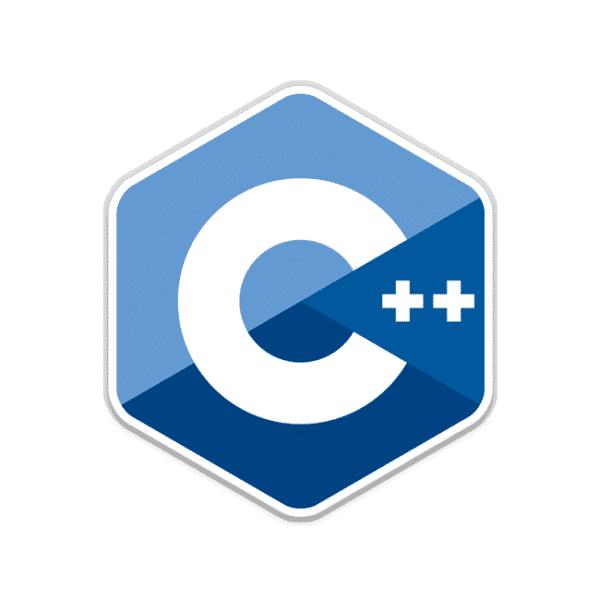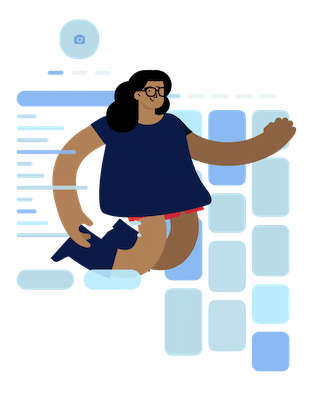C++ is a powerful and versatile programming language that was first created by Bjarne Stroustrup in the early 1980s. It was designed as an extension of the C programming language to provide support for object-oriented programming (OOP) while retaining the efficiency and speed of C. Since its inception, C++ has become one of the most widely used programming languages in the world, with applications ranging from system software and embedded systems to game development and finance.
One of the key features of C++ is its support for OOP, which allows developers to create reusable code in the form of classes and objects. Classes are the building blocks of OOP and are used to define the properties and behavior of an object. An object is an instance of a class, which has its own set of properties and behavior. C++ supports four main principles of OOP: encapsulation, inheritance, polymorphism, and abstraction.
C++ also supports a wide range of data types, including integer, floating-point, and character types, as well as more complex data types like arrays, structures, and classes. These data types can be combined with operators and functions to perform complex calculations and manipulate data in various ways.
Functions are an essential part of any programming language, including C++. They allow developers to group a set of instructions together and execute them as a single unit. C++ supports two types of functions: built-in functions, which are provided by the language, and user-defined functions, which are created by the developer.
Overall, C++ is a powerful and flexible programming language that is well-suited for a wide range of applications. Its support for OOP, robust data types, and extensive libraries and tools make it a popular choice for developers looking to create high-performance software
C++ is a powerful and versatile programming language that was first created by Bjarne Stroustrup in the early 1980s. It was designed as an extension of the C programming language to provide support for object-oriented programming (OOP) while retaining the efficiency and speed of C. Since its inception, C++ has become one of the most widely used programming languages in the world, with applications ranging from system software and embedded systems to game development and finance.
One of the key features of C++ is its support for OOP, which allows developers to create reusable code in the form of classes and objects. Classes are the building blocks of OOP and are used to define the properties and behavior of an object. An object is an instance of a class, which has its own set of properties and behavior. C++ supports four main principles of OOP: encapsulation, inheritance, polymorphism, and abstraction.
C++ also supports a wide range of data types, including integer, floating-point, and character types, as well as more complex data types like arrays, structures, and classes. These data types can be combined with operators and functions to perform complex calculations and manipulate data in various ways.
Functions are an essential part of any programming language, including C++. They allow developers to group a set of instructions together and execute them as a single unit. C++ supports two types of functions: built-in functions, which are provided by the language, and user-defined functions, which are created by the developer.
Overall, C++ is a powerful and flexible programming language that is well-suited for a wide range of applications. Its support for OOP, robust data types, and extensive libraries and tools make it a popular choice for developers looking to create high-performance software

History of C++ Programming Language
C++ is a programming language that was created by Bjarne Stroustrup while working on his Ph.D. thesis at Bell Labs in 1979. Initially, it was called “C with Classes” because it added support for classes, which are the basic building blocks of object-oriented programming. Stroustrup created C++ to extend the capabilities of the popular C programming language, which lacked some of the features that were necessary for large-scale software development.
C++ was first released in 1985 and quickly gained popularity due to its powerful features and ability to provide low-level memory manipulation. Its support for system programming made it a popular choice for operating systems, compilers, and other system software. Over time, C++ has become one of the most widely used programming languages in the world, with applications in a wide range of industries, including gaming, finance, and engineering. It continues to evolve and improve with new versions and updates, making it a versatile and reliable language for developers
Features of C++ Programming in Detail
C++ has a number of features that make it a popular choice for developers. Some of these features are:
1. Object-Oriented Programming:
C++ provides support for object-oriented programming, which allows developers to create reusable code in the form of classes and objects. In OOP, a class is a blueprint that defines the properties and behavior of an object. An object is an instance of a class, which has its own set of properties and behavior.
For example, we can create a class called “Car” that defines the properties and behavior of a car object
(C++)
class Vehicle {
public:
int speed;
string make;
void accelerate();
void brake();
};
In this example, the Car class has two properties (speed and make) and two methods (accelerate and brake). The accelerate method increases the speed of the car, while the brake method decreases the speed of the car.
To create an object of the Car class, we can use the following code:
(C++)
Car myCar;
myCar.speed = 0;
myCar.make = “Toyota”;
This creates an object called “myCar” of the Car class and sets its speed and make properties.
2. Platform Independence:
C++ code can be compiled to run on different platforms, such as Windows, Linux, and macOS. This is achieved through the use of compilers that generate machine code for the target platform. This allows developers to write code once and deploy it on multiple platforms without the need for major modifications.
3. Efficiency:
C++ code is compiled directly to machine code, which makes it faster and more efficient than interpreted languages like Python. This makes it suitable for applications that require high performance, such as system software and game development.
4. Low-level Access:
C++ allows developers to access memory directly, which makes it possible to write low-level code for systems programming. This allows developers to optimize code for specific hardware architectures and to create efficient algorithms for tasks like image and audio processing.
5. Standard Library:
C++ has a large standard library that provides a wide range of functions and data structures for developers to use. The standard library includes support for input/output, string manipulation, mathematical operations, and more.
Data Types
C++ provides a variety of built-in data types that are used to store different kinds of data. These data types can be classified into three categories:
- Fundamental Types: These are the basic data types that are used to store simple values like integers, floating-point numbers, and characters. Examples of fundamental data types in C++ include:
- int: used to store integer values
- float: used to store floating-point values with single precision
- double: used to store floating-point values with double precision
- char: used to store single characters
- bool: used to store boolean values that can be either true or false
- Derived Types: These data types are created by combining fundamental types in different ways. Examples of derived data types in C++ include:
- arrays: used to store a fixed-size sequence of elements of the same type
- pointers: used to store the memory address of another variable or object
- structures: used to store a collection of related data items of different types
- User-defined Types: These are types that are created by the developer using classes and objects. They can be used to store complex data structures and provide customized behavior. Examples of user-defined data types in C++ include:
- classes: used to create user-defined types with encapsulated data and behavior
- enums: used to define a set of named constant values
- typedefs: used to create a new name for an existing data type to improve readability and maintainability of code
Using these data types, developers can create complex and powerful applications that can handle different types of data and operations. It is important to understand the characteristics and limitations of each data type to choose the appropriate type for each application
Functions
Functions are an essential part of any programming language, including C++. They allow developers to group a set of instructions together and execute them as a single unit. In C++, functions can be used for a wide range of tasks, from simple calculations to complex operations. C++ supports two types of functions: built-in functions and user-defined functions.
Built-in functions are functions that are provided by the C++ language and can be used without any additional coding. These functions are part of the standard library and provide a range of useful features, such as input/output operations, mathematical calculations, and string manipulation. Examples of built-in functions in C++ include printf(), scanf(), and pow().
User-defined functions, on the other hand, are functions that are created by the developer to perform specific tasks. These functions are defined using the following syntax:
(C++)
return_type function_name(parameter_list) {
// Function Body
return value;
}
The return_type specifies the data type of value that the function will return after execution, and the function_name is a unique identifier that is used to call the function. The parameter_list contains the input parameters that are passed to the function, which can be used in the function body to perform calculations or other operations.
User-defined functions are useful for breaking down complex operations into smaller, more manageable pieces of code. By grouping related instructions together in a function, developers can make their code more organized and easier to maintain. User-defined functions can also be used to create reusable code that can be used in multiple parts of a program or even across different programs.
When a function is called, control is passed to the function body, where the instructions are executed. Once the function has completed its task, control is returned to the calling code, and the return value, if any, is passed back to the calling code. This process is known as function invocation, and it is an important concept in C++ programming.
For example, we can create a function called “addNumbers” that takes two integers as arguments and returns their sum:
```(C++)
int addNumbers(int a, int b) {
int sum = a + b;
return sum;
}
To call this function, we can use the following code.
```(C++)
int result = addNumbers(5, 10);
cout << “The sum is: “ << result << endl;
This will output “The sum is: 15”.
Object-Oriented Programming:
C++ is a language that is often associated with object-oriented programming (OOP), which is a popular programming paradigm used for building complex software systems. In OOP, code is organized into reusable components called classes, which define the properties and behavior of objects. An object is an instance of a class, and it can interact with other objects and classes in the system.
One of the key benefits of using OOP in C++ is the ability to create modular and reusable code. A class is like a blueprint for an object, defining its properties and methods. Once a class is defined, objects can be created from it, each with its own set of properties and behavior. This allows developers to write code that can be reused in multiple places within a program or even across different programs.
C++ supports four main principles of OOP: encapsulation, inheritance, polymorphism, and abstraction.
1. Encapsulation:
This refers to the practice of bundling data and behavior into a single unit (i.e., a class). This allows the data to be hidden from other parts of the program and can only be accessed through methods that are defined in the class.
2. Inheritance:
This refers to the ability to create new classes that are built on top of existing classes. This allows the new class to inherit properties and behavior from the existing class and to add new properties and behavior of its own.
For example, we can create a class called “Vehicle” that defines the basic properties and behavior of all vehicles:
C++)
class Vehicle {
public:
int speed;
string make;
void accelerate();
void brake();
};
We can then create a new class called “Car” that inherits from the Vehicle class and adds new properties and behaviour:
(C++)
class Car: public Vehicle {
public:
int numDoors;
void openDoor();
void closeDoor();
};
In this example, the Car class inherits the speed and make properties and the accelerate and brake methods from the Vehicle class. It also adds new properties (numDoors) and methods (openDoor and closeDoor).
3. Polymorphism:
This refers to the ability of objects to take on multiple forms. In C++, this is achieved through function overloading and virtual functions.
Function overloading allows developers to create multiple functions with the same name but with different parameters. When the function is called, the compiler determines which version of the function to execute based on the parameters passed.
Virtual functions are functions that are declared in a base class and can be overridden by derived classes. This allows objects of the derived class to use their own version of the function instead of the one defined in the base class.
4. Abstraction:
This refers to the process of breaking down complex systems into smaller, more manageable parts. In OOP, this is achieved through the use of classes and objects. A class provides a high-level view of an object and abstracts away the details of its implementation.
Need Help with C++ Programming?
Conclusion
C++ is a powerful programming language that provides support for both procedural and object-oriented programming paradigms. Its features, such as pointers, templates, and operator overloading, make it a popular choice for building high-performance applications.
C++ also has a rich library of functions and data structures that can be used to develop complex applications quickly and easily. Its support for low-level programming allows developers to optimize their code for specific hardware and system configurations.
In conclusion, C++ is a versatile programming language that has stood the test of time. Its ability to support both procedural and object-oriented programming paradigms, coupled with its powerful features and rich library, make it a top choice for developers looking to build high-performance applications. Whether you’re developing desktop applications, games, or embedded systems, C++ is a language that you should definitely consider.


